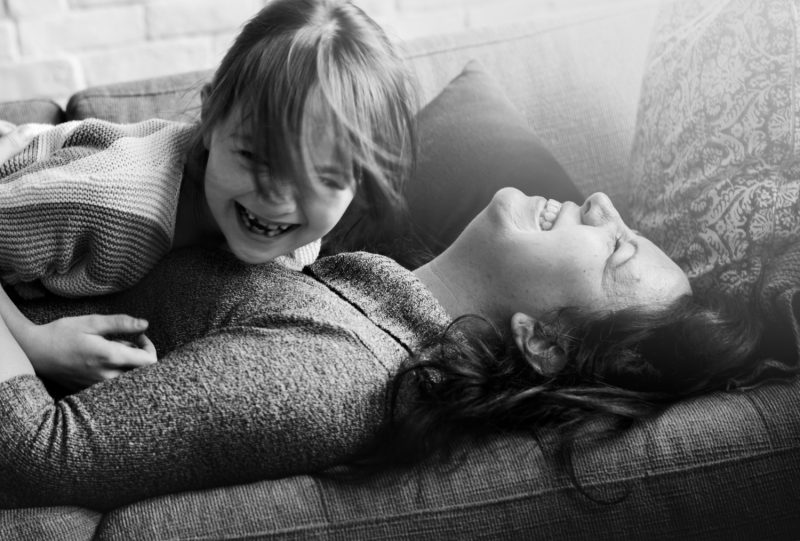Have you ever witnessed your little one transform from sunshine to storm in seconds? Maybe when they were denied a playdate or dropped their ice cream cone? While these may be expected in toddlers, persistent meltdowns in school-aged children could indicate difficulties with emotional self-regulation. Witnessing your child overwhelmed by frustration or sadness, emotions swirling out of control, can feel like navigating a hurricane in a teacup.
Frustrating, right? But you’re not alone. Many parents and caregivers face the challenge of helping children navigate their big emotions. That’s why it’s essential to teach emotional regulation to children, for it’s a fundamental life skill. Developing this will help your children navigate the world by balancing these big feelings and managing complex social interactions.
Regulating emotions in children is a complex and essential skill that takes time and guidance to develop. But worry not! This article will explore the “whys” and “hows” of emotion regulation in child development. The sections below will discuss knowledge and strategies that will guide your child toward emotional mastery. Read on to find out more.
Defining emotion regulation in child development
According to the American Psychological Association, self-regulation refers to the ability to control one’s behavior, and emotional regulation is a big part of it. It includes an individual’s capacity to control or adjust a specific emotion. Emotional regulation helps your child with the ability to understand their feelings, respond healthily, and adapt to different situations.
A study done on emotion regulation and cognitive and social functioning in early development has shown that children who learn to manage their emotions can handle stress, build healthy relationships, and thrive academically. The child’s ability to manage these emotions changes drastically as they grow. Here’s a rough outline of their development.
Infancy (0-1 years)
Little ones communicate mainly through cries and fussiness, driven by basic needs and comfort. They can self-soothe by sucking and responding to distress. By six months, they begin experiencing joy and fear, and some studies show playing songs can even calm fussy babies!
Toddlerhood (2-3 years)
In this phase, emotions become more intricate, with fear taking center stage from infancy to toddlerhood. You can help your child by teaching them how to name emotions and encouraging expressions to manage fear. By age two, toddlers employ strategies like distancing from upsetting situations. Research shows toddlers improve in choosing appropriate coping mechanisms for various stressful situations and adapting to their surroundings as they grow older.
Childhood (3- 12 years)
In this period of emotional regulation in childhood, children learn to differentiate appropriate emotional expressions but might struggle to communicate them effectively. Your role here is to validate their feelings, build an “emotion vocabulary,” and model healthy coping mechanisms, fostering their self-regulation in childhood.
Long-term implications for mental health
Uncontrolled emotions create a ripple effect that impacts a child’s life in many ways. For starters, constant tantrums will strain you and your child’s bond, creating a tense atmosphere at home. This can also contribute to parental burnout.
Read more: Parental Burnout: What It Is and How to Avoid It
The child’s struggles also make it harder to make and keep friends, leading to feelings of isolation and withdrawal. Additionally, fostering emotional regulation for parents is also equally essential for creating a supportive environment for children to thrive emotionally and academically.
Mastering emotional regulation skills in childhood is a long-term investment that will continue to help throughout their life. Children who can manage their emotions can bounce back from challenges more easily. Conversely, studies have shown that poor emotion regulation can impact mental health, relationships, and overall life satisfaction. It is crucial to recognize and nurture these skills early on.
Poor emotional regulation can put your child at risk of developing behavioral disorders, increasing their vulnerability to future mental health issues. Struggling with self-regulation for parents and children can lead to increased anxiety, depression, and difficulties in forming healthy connections. On the other hand, having healthy emotion regulation provides the child with the tools to cope with challenges, manage stress, and build resilience and positive relationships.
Teaching emotional regulation to children: strategies for parents and professionals
Parents play a crucial role as a guide and support during their child’s developmental stages. They are considered to be one of the main role models through which a child observes and learns responses and skills.
Understanding and teaching emotional self-regulation not only enhances a child’s emotional resilience but also encourages a positive family dynamic, promoting a peaceful and healthy home environment.
Therefore, parents or caregivers must be equipped with this knowledge as it, in return, will help in providing appropriate guidance to their child. Now comes the fun part: action! Here are some practical strategies you can use to help your child become an emotional master.
Parental strategies for nurturing emotional regulation
As a parent, you hold a strong role in nurturing your child’s emotional regulation skills. You can refer to these effective strategies to guide you on this journey.
- Be a calm coach. When your child is upset, the first thing you should do is to try to validate their feelings. It is important to try to understand the underlying issues that they might be facing. You can talk calmly to your child, offering support and guiding them toward solutions.
- Label emotions. The next step is to help your child to recognize their feelings. You can guide them by teaching them what basic emotions are by using simple words like “happy,” “sad,” or “frustrated.” You can also do this by role-playing or while reading a story to them. This builds their emotional vocabulary along with their self-awareness.
- Model healthy coping. You would have noticed your child copying you or repeating everything you do. Children tend to pick up habits by observing people around them, especially if it is their parents or caregivers. Therefore, if you can sit down with them to teach them some basic strategies for managing difficult emotions, it’ll help them to understand that it’s okay to have these emotions, and they can learn to manage them.
- Create a safe space. This involves making your home a haven for your children where they feel comfortable expressing their emotions without fear of judgment. You start by keeping an open mind and reassuring them that you are there for them no matter what.
Read more: Underlying Causes of Children’s Behavior Problems
You can also include strategies such as mindful parenting and co-regulation while helping your little one. Mindful parenting includes being present and accepting of your child’s emotions while responding calmly to them. Co-regulation is a process through which parents provide a supportive presence to their child while fostering self-regulation skills. With these approaches, you can help your child learn vital skills to tackle life’s challenges with resilience and confidence.
Read more: Challenges in Parenthood and How Mindful Parenting Can Help
Recognizing warning signs and seeking professional guidance
Every child grows differently, but it’s important to watch out for signs that could mean they need help. These signs include:
- Your child often has meltdowns because they struggle with their feelings.
- Your child avoids social activities because they find it hard to interact with others.
- In serious cases, your child may hurt themselves or act in harmful ways.
If you see these signs, get advice from a therapist or counselor who knows about child development.
Developing emotional intelligence and self-regulation
Emotional intelligence (EQ) is the ability to understand and manage your own emotions, as well as the emotions of others. It plays a key role in self-regulation, and fostering EQ in your child will enable them to navigate their emotions. Here are some ways to do this:
- As a parent, you can set an example by talking about your emotions openly and encouraging your child to do the same.
- Next, you can also teach them some healthy coping strategies, such as deep breathing, relaxation techniques, and expressing their needs assertively.
- Create opportunities for your child to engage in social interaction where they can practice expressing their emotions in a safe environment.
In conclusion
Understanding and supporting your child’s emotional development is an ongoing journey. Put these strategies discussed here into action and seek professional guidance when your child needs it. By doing so, you can equip them with the skills they need to thrive in their life. Remember, every step you take toward nurturing your child’s emotional well-being is a step toward building a brighter future for them.
Start by becoming your child’s emotional guide and help them navigate the waves of life with confidence and resilience. This is just the beginning! So, take off on a journey together and watch your child blossom into an emotionally intelligent individual ready to take on the world.
If you would like to see more resources on self-regulation, check out the Parenting Science Labs. The lab uses the research of the Institute for Life Management Science to produce courses, certifications, podcasts, videos, and other tools. Visit the Parenting Science Labs today.
Photo by rawpixel.com on Freepik




